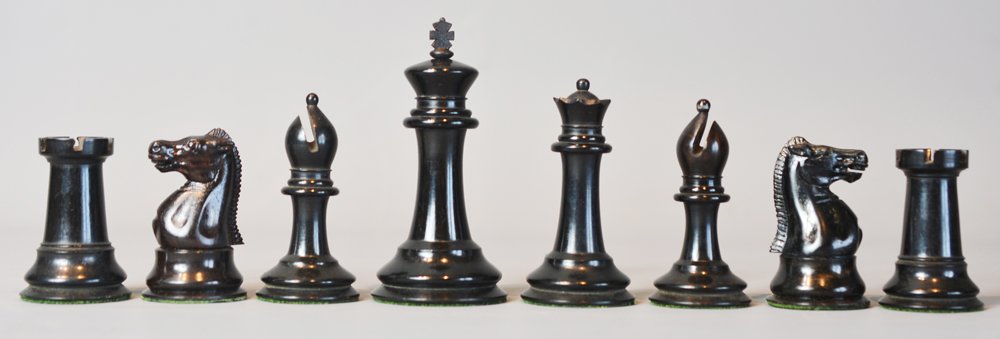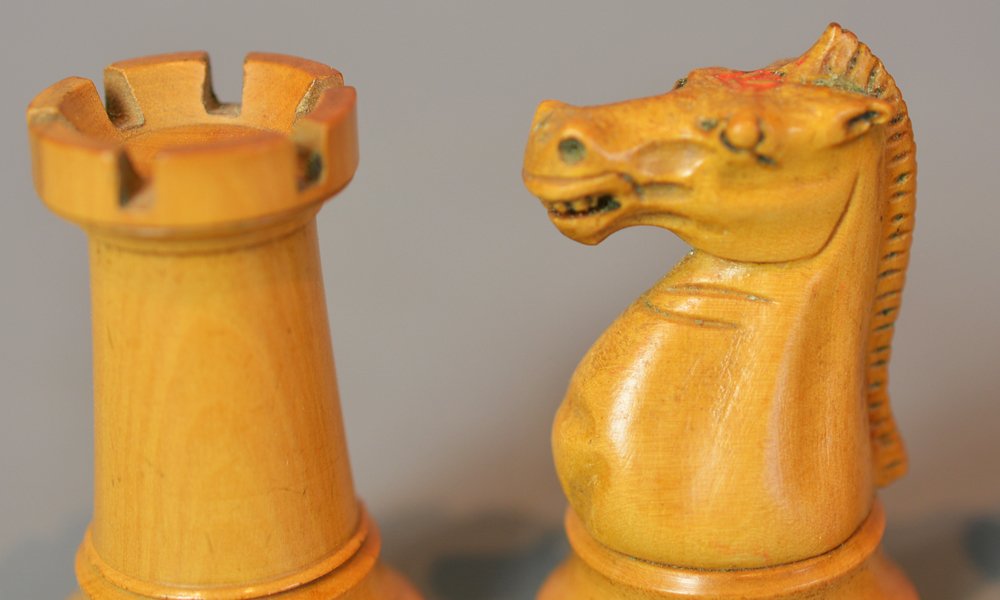The 1870-1875 Jaques (Steinitz) Staunton Tournament chess set by “Jaques of London”.

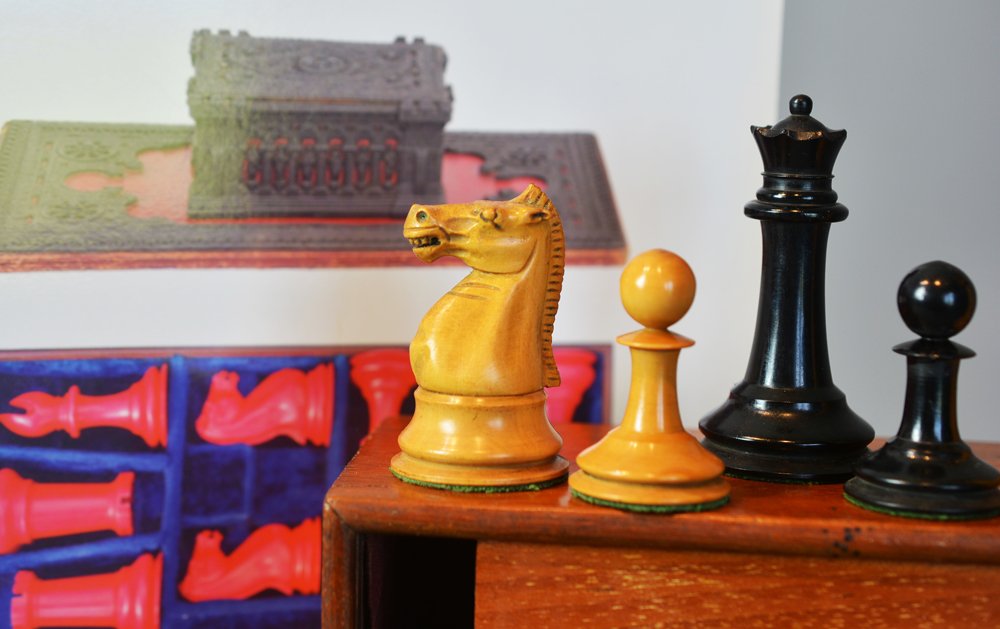
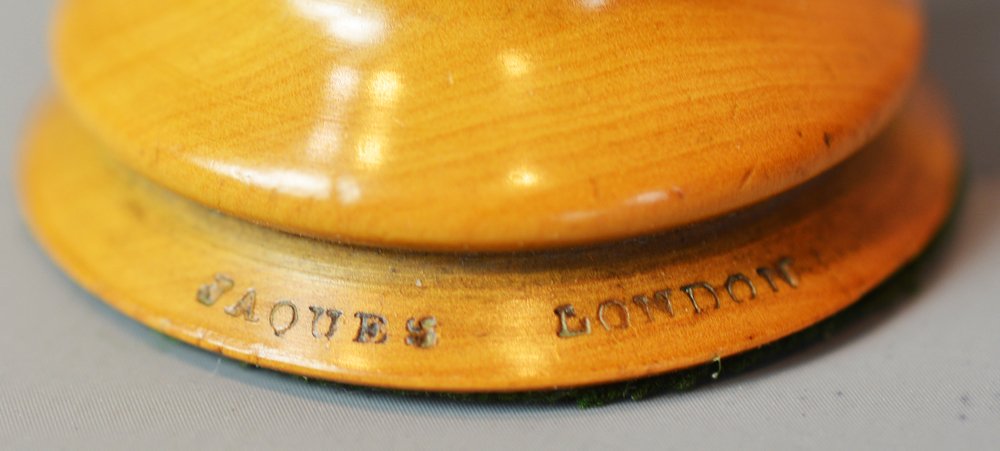
What they did…
I regard the Jaques Tournament Size Steinitz Chessmen as a remarkable representation of chess history and craftsmanship. These Staunton chess pieces, crafted in Boxwood and Ebony and weighted, offer an impeccable balance of form and function. Standing 3.5 inches tall, the King bears the prestigious “Jaques London” stamp, while the Kingside Knights and Rooks are marked with the King’s crown, further underscoring their authenticity and heritage. The Knights, reflecting the iconic Steinitz style, are particularly well-turned and showcase the artistry Jaques is renowned for.
What makes this set truly exceptional is the elegant patina that has developed over time, giving it a rich, honeyed glow that only adds to its aesthetic appeal. The set’s excellent condition, complete with its Original Mahogany slide-top box, ensures it is not only a collector’s treasure but a functional masterpiece. These chessmen, ideally suited for play on a board with 2-1/8″ to 2-1/4″ squares, carry the legacy of one of chess’s first World Chess Champion, Wilhelm Steinitz.
Wilhelm Steinitz (1836–1900) holds a singular place in chess history as the first official World Chess Champion, reigning from 1886 to 1894. A transformative figure in the chess world, Steinitz’s contributions extend far beyond his competitive achievements; he revolutionized how the game was played and understood, shaping the strategies that would define modern chess.
Before officially claiming the title, many historians argue that Steinitz effectively became the world’s strongest player as early as 1866. His dominance was unprecedented: he went undefeated in match play for 32 years, a record that underscores his strategic brilliance and adaptability. While his championship ended when he was defeated by Emanuel Lasker in 1894, Steinitz’s influence persisted, with Lasker himself acknowledging his debt to his predecessor’s ideas.
Steinitz’s legacy as a player is matched by his groundbreaking work as a chess theoretician. Initially known for his sharp and aggressive attacking play, he introduced a revolutionary positional style in 1873. This method emphasized long-term planning, structural advantages, and the subtle accumulation of small gains over immediate tactical fireworks. Though controversial at the time, with critics labeling it “cowardly,” Steinitz proved that positional play could be as potent as the romantic style of his era, often leading to devastating attacks built on a solid foundation.
His contributions to chess theory were extensively chronicled in his writings, where he fervently defended his ideas in what became known as the “Ink War”—a heated and sometimes acrimonious debate with his contemporaries. By the 1890s, his principles were widely accepted, paving the way for future champions to build on his insights.

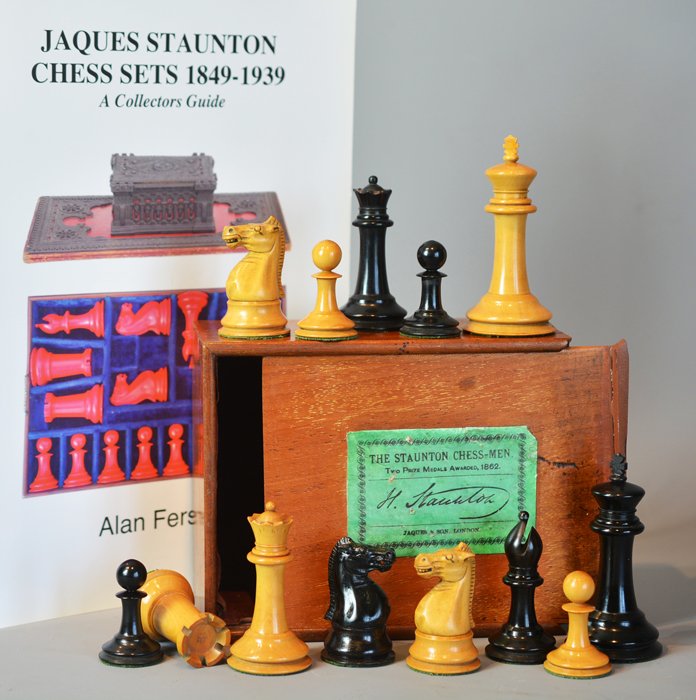


My opinion of this design…
I find the Jaques Tournament Size Steinitz Chessmen to be an exceptional set, both for its historical value and its playability. The craftsmanship is superb, with the Boxwood and Ebony pieces boasting a pleasing honey patina that only adds to their vintage allure. The weighting of the pieces provides an excellent feel during play, particularly with the King’s ideal size of 3.5 inches. This perfect proportion offers a comfortable, balanced grip, making it an absolute joy to use in tournaments or casual games. The finely detailed Knights, especially in the distinctive Steinitz style, are an artistic highlight that stands out from other sets.
From a collecting perspective, the Original Mahogany Slide-top box with the manufacturer’s label and the well-preserved condition of the pieces make this set a valuable addition to any serious collection. The historical significance of the set, being associated with one of the greats like Steinitz, elevates its status. For display, the aesthetic appeal of the honey-toned Boxwood against the deep Ebony creates a striking contrast that makes the set visually stunning, particularly when paired with a well-matched chessboard with 2-1/8″ to 2-1/4″ squares. Overall, this set offers a rare balance of beauty, historical importance, and practicality, making it a standout for both collectors and players alike.
